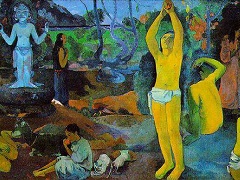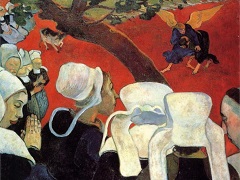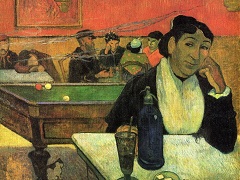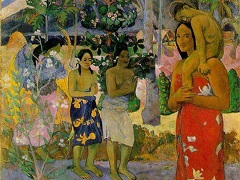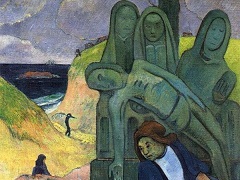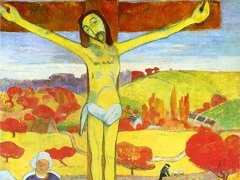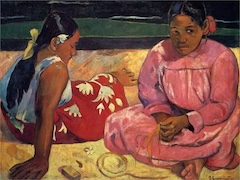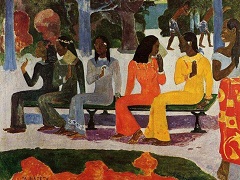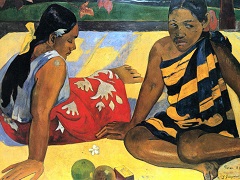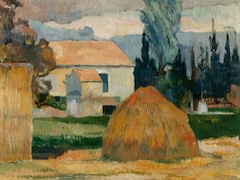Statue Oviri, 1894 by Paul Gauguin

Gauguin discovered clay with the ceramist Ernest Chaplet. He hoped to earn money with the pots he made in 1887. His potting came to an end during his last stay in Paris with the production of a masterpiece, his largest piece: Oviri, a stoneware figure fired in Chaplet's kiln in December 1894. As he did not manage to sell "his Murderess" he asked Daniel de Monfreid for it in 1900, intending to put it on his tomb in Tahiti. Luckily Monfreid did not send it.
Albert Aurier was dazzled by his statues in 1891: "How to describe these strange, barbaric, savage ceramics in which, sublime potter, he has kneaded more soul than clay?" but more than half a century went by before the ceramics a roused any further interest. Christopher Gray, the author of the catalogue Sculpture and Ceramics of Paul Gauguin (1963) saw in Oviri "the expression of Gauguin's profound disillusionment and discouragement. He was only 47 and he had poured all his strength to his art for twelve years. He felt he was making no progress. His return to France led him into a series of disasters. The theme of Oviri is death, savagery, wildness. Oviri lords it over a dead she-wolf, crushing the life out of her cub." Is it the death of the civilised ego, needed for the artist's regeneration, or is it, as Gauguin wrote to Odilon Redon, a matter of "life in death"? From the back, Oviri looks rather like Rodin's Balzac, a sort of menhir symbolising the gush of creativity.

